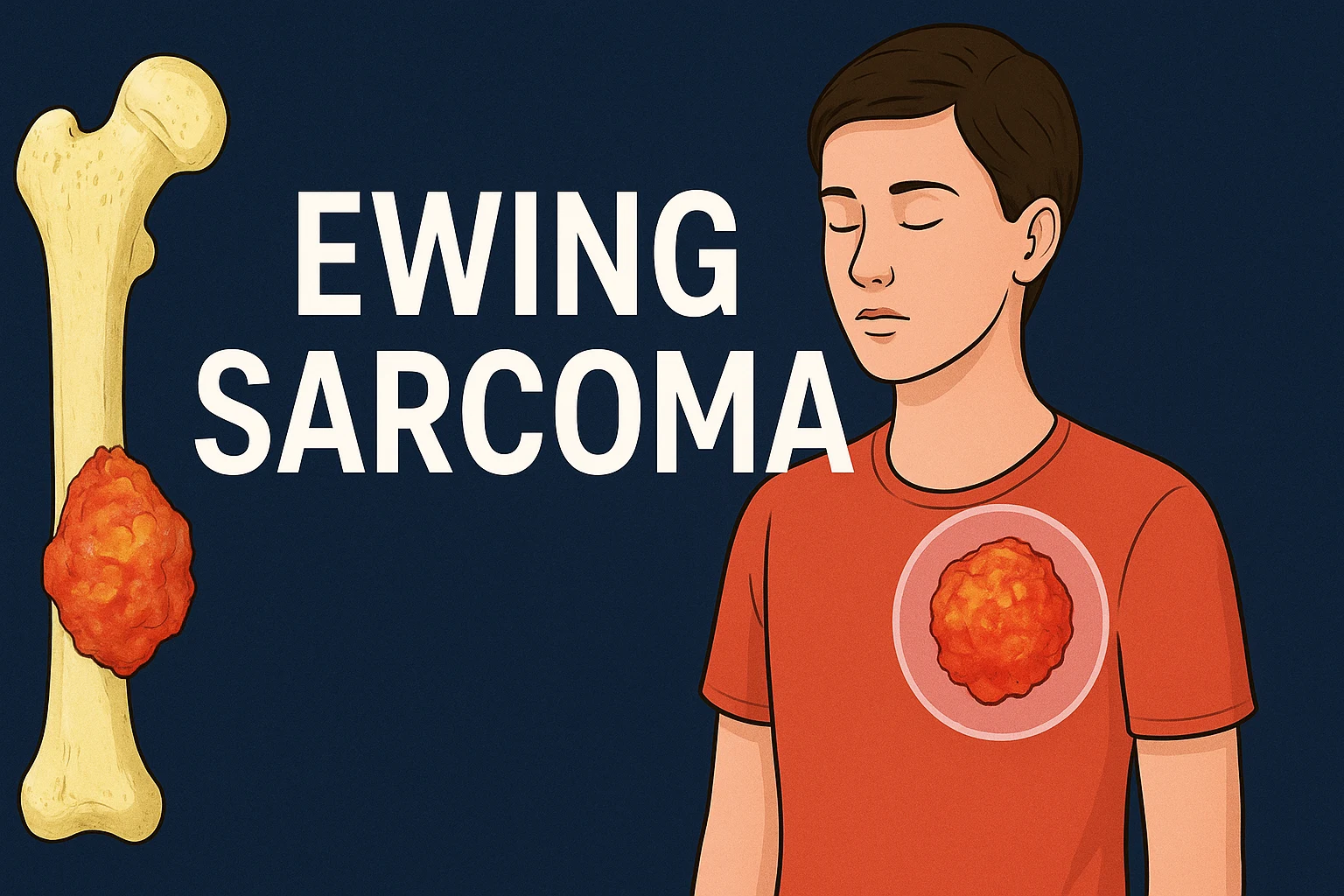A team of scientists at Children’s Hospital Los Angeles (CHLA) has made a major breakthrough in understanding Ewing Sarcoma, a rare and aggressive cancer of the bone and soft tissue that predominantly strikes children and adolescents. Their findings provide compelling genetic evidence that this cancer may originate from neural crest cells—a group of highly versatile embryonic cells that typically develop into neurons, glial cells, and pigment-producing cells.
The study, conducted in collaboration with the Keck School of Medicine of the University of Southern California (USC), offers new insight into one of oncology’s most enduring puzzles: why this cancer occurs in young people and why its tumor cells exhibit such primitive, mixed characteristics. The results were published in Cell Reports and represent the first in vivo (living organism) genetic evidence linking neural crest cells to the origins of Ewing Sarcoma.
Cracking a Longstanding Mystery in Pediatric Oncology
For decades, researchers have sought to understand what makes Ewing Sarcoma unique. Although the disease has long been known to arise from a genetic fusion between two genes—EWSR1 and FLI1—scientists did not know which specific cells in the body were vulnerable to this mutation, or why only certain cell types developed cancer while others remained unaffected.
“Ewing Sarcoma has remained one of the most enigmatic childhood cancers,” explains Dr. James Amatruda, MD, PhD, Director of the Cancer and Blood Disease Institute at CHLA and senior author of the study. “For years, we knew the genetic cause but not the cellular origin. Our findings now provide the first solid evidence that neural crest cells could be the starting point.”
Dr. Amatruda adds that identifying the cell of origin is more than an academic achievement—it is a crucial step toward developing targeted and less toxic treatments. “By understanding where and how this disease begins, we open the door to creating therapies that can interrupt its development at the earliest stages,” he says.
The EWSR1::FLI1 Fusion: A Powerful but Puzzling Mutation
The EWSR1::FLI1 fusion oncogene, discovered more than 30 years ago, is the defining hallmark of Ewing Sarcoma. It acts as a master regulator, reprogramming normal cells into cancerous ones. However, not all cells respond to this mutation in the same way. Many die upon expression of the fusion gene, suggesting that only certain cells have the right molecular environment to tolerate and propagate the cancer-driving signal.
This raised a critical question: which cells can survive and transform under the influence of EWSR1::FLI1?
To find out, Dr. Amatruda’s laboratory developed the first genetic zebrafish model of Ewing Sarcoma in 2022. The model allowed researchers to visualize early cancer development in a living organism, thanks to the zebrafish’s transparent embryos and rapid development. The team could directly observe fluorescently labeled cells as they underwent genetic changes leading to tumor formation.
Neural Crest Cells: The Surprising Survivor
In the new study, the researchers selectively activated the EWSR1::FLI1 fusion in different cell types within zebrafish embryos. Surprisingly, most cells could not survive the fusion’s effects—they quickly died or failed to proliferate.
But neural crest cells were an exception. Not only did they survive, but they also underwent a remarkable transformation. Under the influence of the EWSR1::FLI1 fusion, these cells began to behave like mesodermal cells—cells that typically give rise to bones and muscles. This reprogramming effectively pushed the neural crest cells into an identity crisis, blurring the boundaries between cell lineages and setting the stage for tumor initiation.
“This is an exciting step forward in Ewing Sarcoma research,” Dr. Amatruda says. “We can now see, for the first time, how a developmental cell type is hijacked and reprogrammed to become malignant.”
Collaboration and Cutting-Edge Techniques
The study was the result of close collaboration between Dr. Amatruda’s team at CHLA and Dr. Gage Crump, PhD, Professor and Vice Chair of Stem Cell Biology and Regenerative Medicine at USC. The first author of the paper, Dr. Elena Vasileva, a postdoctoral fellow at CHLA, led many of the pivotal experiments.
Dr. Vasileva and her colleagues discovered that the EWSR1::FLI1 fusion does more than simply turn on cancer-related genes—it repurposes normal developmental pathways. The oncogene exploits the same molecular signals that neural crest cells use during normal embryonic growth, but in a way that locks them into a partially reprogrammed, unstable state.
“It was remarkable to see how these pre-tumor cells changed their behavior and characteristics,” says Dr. Vasileva. “They appeared to hijack normal developmental programs, including those responsible for forming limbs and connective tissue. This reprogramming likely fuels uncontrolled growth and tumor formation later on.”
Explaining Why Ewing Sarcoma Affects Children
The team’s discovery also offers a compelling explanation for why Ewing Sarcoma primarily occurs in children and teenagers rather than in adults. Neural crest cells exist only during early development, when the body is still forming. If the EWSR1::FLI1 fusion occurs during this narrow developmental window, the reprogramming of neural crest cells could trigger cancer formation.
In contrast, adults lack active neural crest cells, which may explain the absence of new Ewing Sarcoma cases later in life.
Moreover, the study helps clarify another mystery: why Ewing Sarcoma cells look so primitive and display characteristics of multiple tissues under the microscope. The hybrid identity of neural crest–derived cells reprogrammed toward mesodermal lineages could explain the tumor’s unusual cellular diversity.
“The precancer cells seem to be caught at a crossroads of multiple potential cell fate decisions,” Dr. Vasileva explains. “By understanding these reprogramming trajectories, we may uncover new vulnerabilities in Ewing Sarcoma cells and identify therapeutic targets that exploit these weaknesses.”
Toward New Therapies for Pediatric Cancer
The implications of this research extend far beyond understanding cancer’s origin. By defining the specific cellular and molecular pathways hijacked by the EWSR1::FLI1 fusion, scientists can now begin to look for drugs that reverse or block these reprogramming processes.
“This is a major step toward precision medicine for Ewing Sarcoma,” says Dr. Amatruda. “We hope to design therapies that stop the disease before it ever gains a foothold—targeting the developmental missteps that drive it.”
As the CHLA and USC teams continue their collaboration, they are now focusing on identifying small molecules or genetic interventions that can prevent neural crest cells from adopting this malignant hybrid state.
For patients and families affected by Ewing Sarcoma, this discovery represents not only a scientific milestone but also a new source of hope—bringing the field one step closer to unraveling the origins of this devastating childhood cancer and, ultimately, finding a cure.



